Uveitis is a condition where the inside structures of the eye (the uvea) become inflamed. Uveitis in cats can be caused by a problem with the eye, like a scratch to the eye, or secondary to a systemic disease, like an infection.
Treatment of uveitis in cats requires an extended course of therapy including anti-inflammatories but may also include other medications depending on the underlying cause. Common complications of chronic uveitis include secondary glaucoma and vision loss.
Quick Overview: Uveitis in Cats
What Is Uveitis in Cats?
Uveitis is inflammation on the inside of the eyeball, affecting the part of the eye referred to as the uvea, which includes the iris, the ciliary body, and the choroid. The uvea provides the main blood supply to the inside of the eye and extends from the front chamber of the eye all the way to the back of the eye just under the retina.
The primary jobs of the uvea are to:
- Produce aqueous humor: The clear fluid in the front chamber of the eye is called aqueous humor. This fluid contains nutrition for important parts of the eye, like the lens and the cornea.
- Remove unwanted materials: Any unwanted cells or material, along with the natural by-products of metabolism in the eye, are collected in the aqueous humor and are drained out of the eye.
- Keep the eye pressure normal: The pressure inside of the eye is a balance between the production of aqueous humor and the drainage of the fluid out of the eye. Drainage from the front chamber of the eye happens through a microscopic, specialized drainage system within the base of the iris (the colored portion of the eye).
Uveitis wreaks havoc within the eye causing swelling of the tissues, a reduced ability to produce aqueous humor, and leakiness to the blood vessels. Normally the aqueous humor in the anterior chamber is very clear, which is important for vision.
When uveitis develops, inflammatory cells like white blood cells and proteins leak into the aqueous humor, causing a haziness or cloudiness to the fluid – this is the hallmark finding of uveitis and is called an aqueous flare. If the uveitis is severe, actual blood and/or pus may develop in the front chamber.
Uveitis may only affect the front chamber of the eye, called anterior uveitis, or the back portion of the eye, called posterior uveitis. If the retina becomes involved in the inflammation, it is called chorioretinitis.
Causes of Uveitis in Cats
The causes of uveitis in cats are diverse and stem from either ocular disease or a systemic disease that affects the eye.
Uveitis in cats can be caused by an ocular disease or a systemic disease that affects the eye.
Ocular diseases in cats that cause uveitis include:
- Corneal ulcers and infections
- Cataract formation
- Trauma to the eye (blunt or penetrating injury)
- Primary eye cancer (neoplasia)
- These cancers develop first inside of the eye, often within the uvea
- The majority of these eye tumors in cats are malignant, meaning they not only grow within the eye, but also spread outside of the eye to other parts of the body (metastasis)
- The most common types of primary eye tumors in cats include:
- Feline Diffuse Iris Melanoma (FDIM)
- Feline Post-Traumatic Ocular Sarcoma (FPTOS)
Systemic diseases that cause uveitis in cats include:
Immune-mediated Uveitis
This is the most common type of uveitis in cats, accounting for 60% of uveitis cases not caused by another eye problem. This type of uveitis is also called “idiopathic uveitis” and has no underlying cause for the inflammation. It often develops into a chronic form of uveitis in middle-aged to older cats.
Infections
Several types of infections may cause severe uveitis in cats.
- Bacterial
- Bartonellosis (infection caused by Bartonella)
- Viral
- Feline infectious peritonitis (FIP) coronavirus
- Feline Immunodeficiency Virus (FIV)
- Feline Leukemia Virus (FeLV)
- Fungal
- Blastomycosis
- Coccidiomycosis
- Cryptococcosis
- Histoplasmosis
- Toxoplasmosis (infection caused by Toxoplasma gondii)
Cancer Spread to the Eye
The uvea is a common place for cancers to spread because it has such a good blood supply. Lymphoma is the most common type of body cancer to spread to the eye and cause uveitis in cats.
Symptoms of Uveitis in Cats
If your cat develops uveitis, you may notice some of these clinical signs:
- Squinting
- Tearing
- Raised third eyelid with sunken eye appearance
- Pawing or rubbing the eye
- Redness or cloudiness to the eye
- Light sensitivity
- Reduced vision or loss of vision
Your cat should be examined by a veterinarian if they are showing symptoms of uveitis. A complete physical examination will be performed to detect any signs of body illness, such as a fever or swollen lymph nodes, and your vet may recommend a work-up to determine the cause of the uveitis.
Common tests for cats with uveitis include:
- Routine blood panel
- FeLV/FIV testing
- Other infectious disease tests based on your geographic area (such as Bartonella, Toxoplasma gondii, or fungal infections)
- X-rays or ultrasound to look for cancer
An eye exam confirms the diagnosis of uveitis – your vet may recommend referral to a veterinary ophthalmologist for a detailed, microscopic examination of the eye and advanced eye testing.
Eye exam findings with uveitis include:
- Redness to the eye membranes
- Cloudiness to the cornea (corneal edema)
- Haze to the fluid in the front chamber of the eye (aqueous flare)
- White blood cell clumps along the inside of the cornea (keratic precipitates)
- Pus in the front chamber of the eye (hypopyon)
- Blood in the front chamber of the eye (hyphema)
- Redness or discoloration to the iris
- Smaller pupil than the other eye (miosis)
- Misshapen pupil
- Haze to the back chamber of the eye (the vitreous)
- Bleeding in the vitreous
- Retinal hemorrhages
- Retinal detachment
- Optic nerve inflammation (optic neuritis)
Eye tests should include fluorescein dye testing to check for corneal ulcers and measurement of the eye pressure, called tonometry. Tonometry is a very important test for diagnosing uveitis, as one of the hallmark test results is a low intraocular pressure (IOP; eye pressure).
Additionally, chronic or poorly treated uveitis will progress into secondary glaucoma, which is diagnosed by measuring an elevated eye pressure.
Treatment of Uveitis in Cats
Treatment of uveitis in cats involves multiple medications, usually given for 2-4 weeks or longer.
Treatment of uveitis involves multiple medications, some given onto the eye and some by mouth. Most often these medications are needed for 2-4 weeks or longer depending upon the cause of the uveitis.
The most important medication type is an anti-inflammatory, no matter what the cause of the uveitis may be. Anti-inflammatory medications can be given as topical eye medications and by mouth and can be either corticosteroids or non-steroidal anti-inflammatory (NSAID) medications.
Commonly used options include:
- Corticosteroid eye drops:
- Prednisolone acetate 1%
- Dexamethasone 0.1%
- NSAID eye drops:
- Ketorolac 0.5%
- Diclofenac 0.1%
- Flurbiprofen 0.03%
Corticosteroids are the most common choice for systemic medications used to treat uveitis in cats.
Importantly, Prednisolone should be used in cats as they don’t metabolize prednisone. Idiopathic uveitis, the most common type, often needs prednisolone therapy at tapering doses for weeks to months.
NSAIDs are not usually recommended in older cats due to the risk of kidney damage from these drugs, but some like robenacoxib (Onsoir ®) are licensed for short-term use in healthy cats.
Atropine is an eye medication that dilates the pupil. Dilating the pupil is important when treating uveitis to both relieve the pain caused by the abnormally small pupil (miosis) but also to reduce the risk of complications from uveitis like scarring and adhesions within the eye (called posterior synechia), cataracts, and secondary glaucoma.
If secondary glaucoma develops, eye drops to reduce the pressure will be necessary.
Other medications might be needed if there is an underlying infectious cause for the uveitis, such as antibiotics or antifungals, or chemotherapy for systemic cancer treatment. If a primary cancer has developed within the eye, an enucleation (eye removal surgery) and biopsy is usually recommended before the cancer has a chance to spread.
Conclusion
Uveitis in cats is inflammation of the inside structures of the eye, and most often has no underlying cause (idiopathic uveitis). Treatment usually involves multiple types of medications like anti-inflammatories, antibiotics, and atropine to dilate the pupil but ultimately depends upon the underlying cause.
Therapy can be necessary for months to reduce the risk of complications of chronic uveitis such as secondary glaucoma and loss of vision.
Frequently Asked Questions?
Can uveitis in cats be cured?
Uveitis can be cured if it is caused by a treatable condition such as a corneal infection or systemic infection. However, cats are more often affected with idiopathic uveitis which has no underlying cause. This type of uveitis is often a chronic disease that is managed with long-term medications but not cured.
What is the most common cause of uveitis?
The most common cause of uveitis in cats is idiopathic inflammation, which is inflammation that has no underlying cause. There is no single test to make this definitive diagnosis, but rather is a diagnosis made when other causes, like infections, are ruled out with testing.
Does uveitis ever go away?
Uveitis can be successfully treated and fully resolve in many cases, particularly uveitis caused by a treatable eye condition (such as a corneal infection) or a treatable body condition (such as a systemic infection). However, the most common type of uveitis in cats is idiopathic uveitis which can be chronic or recurrent and require long-term therapy to control.
How can I treat my cats eye inflammation?
If your cat is showing signs of eye inflammation, you should take them to your veterinarian in a timely manner for an exam. Uveitis can be caused by a variety of different conditions ranging from infections to immune-system inflammation, and your vet will prescribe the appropriate medications to treat the uveitis and its underlying cause. It is never safe to treat your cat’s eye with leftover medications as it could make the uveitis worse.
-
Jinks MR, English RV, Gilger BC. Causes of endogenous uveitis in cats presented to referral clinics in North Carolina. Vet Ophthalmol. 2016 Jul;19 Suppl 1(Suppl 1):30-7.
-
Stiles J. Bartonellosis in cats: a role in uveitis? Vet Ophthalmol. 2011 Sep;14 Suppl 1:9-14.
-
Allbaugh, RA. Corneal Ulcers in Dogs and Cats. In: Reinstein SL, ed. Guide to Clinical Ophthalmology. 1st ed. NAVC Media; 2019:107-118.
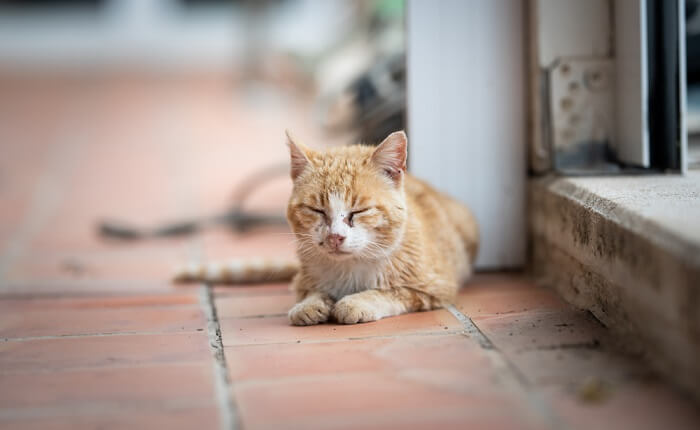
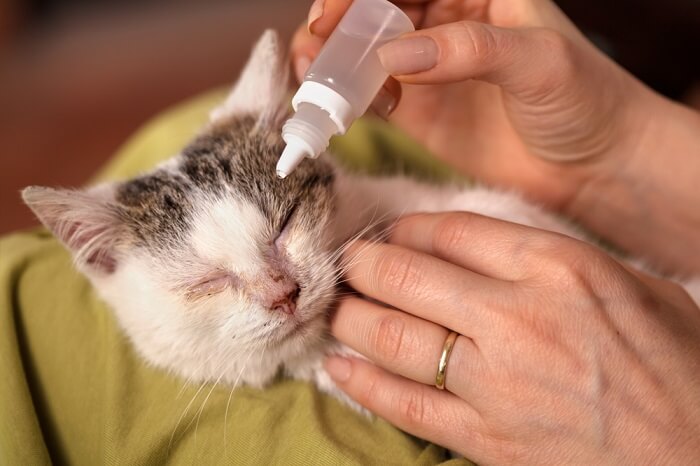
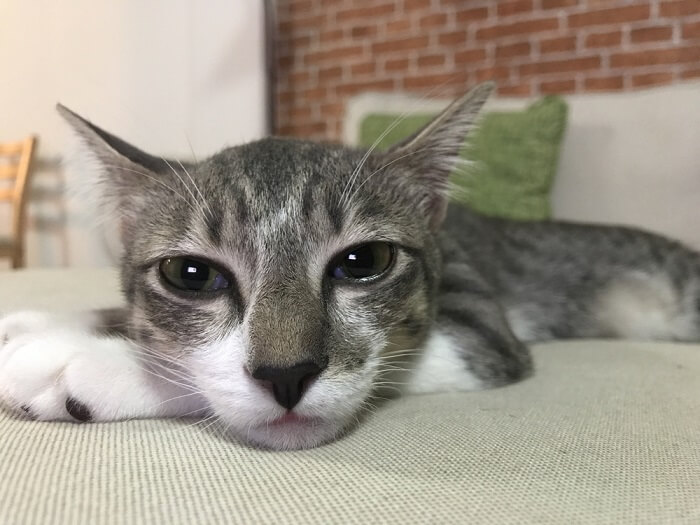



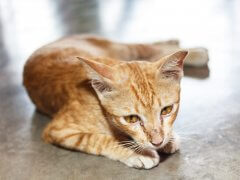

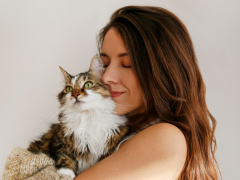

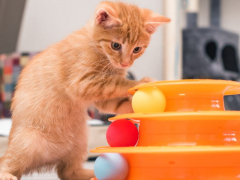
Re uveitis: is it contagious? Might a 2nd cat help reduce stress which apparently brought about this issue?
Uveitis is not contagious. As for your second question, it depends—here are some signs your cat might want a feline companion. Wishing you all the best!